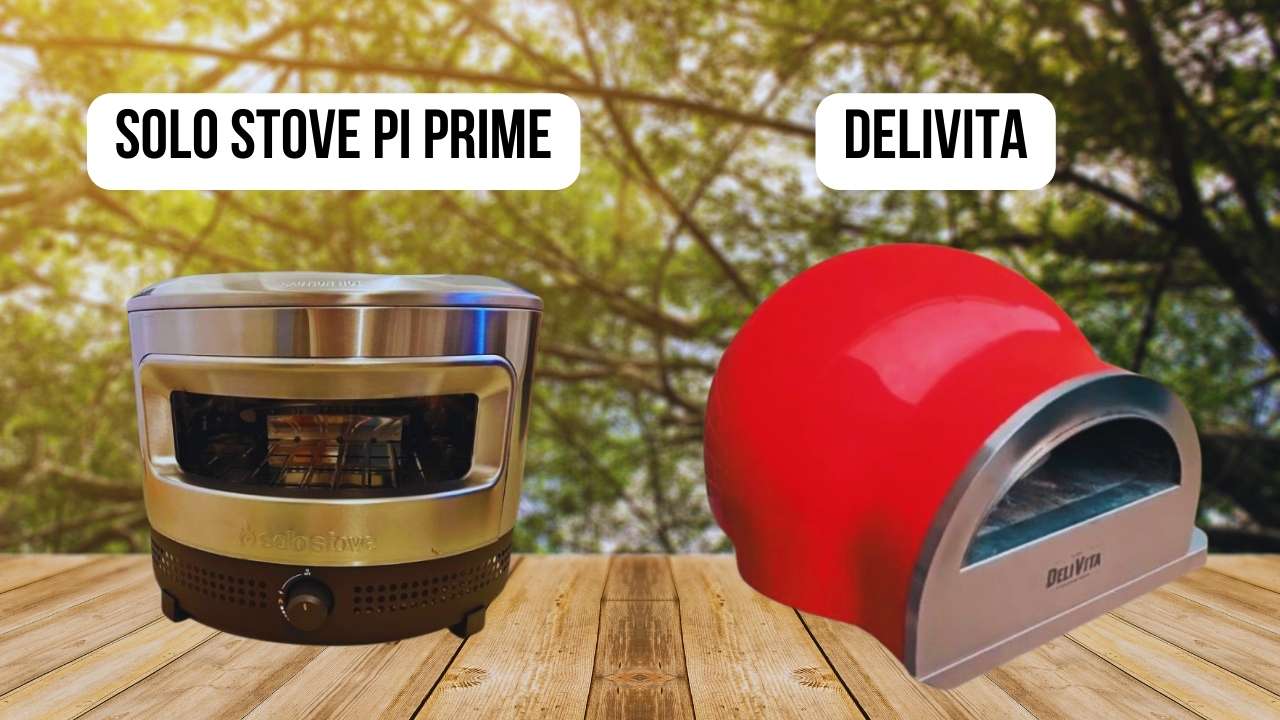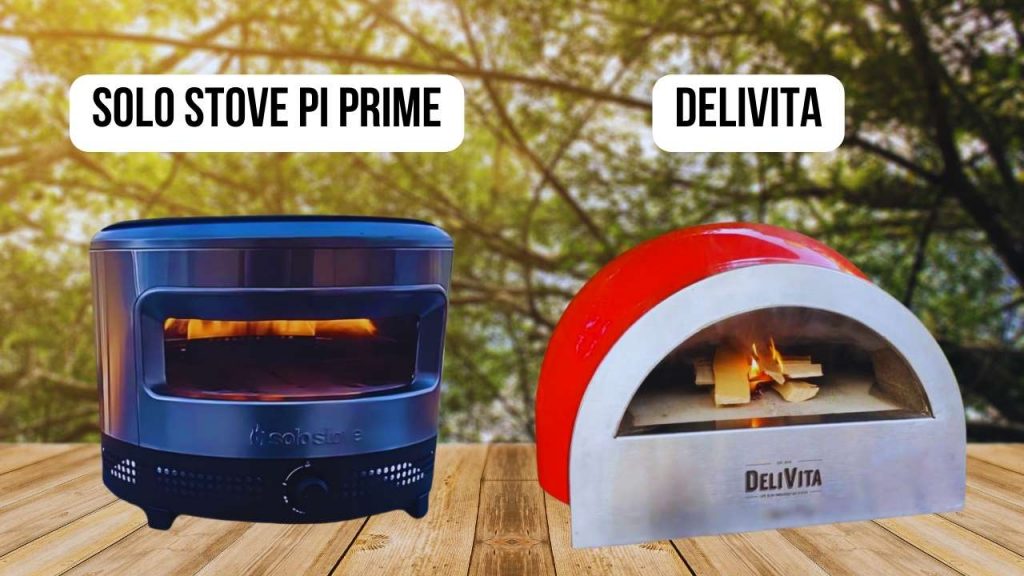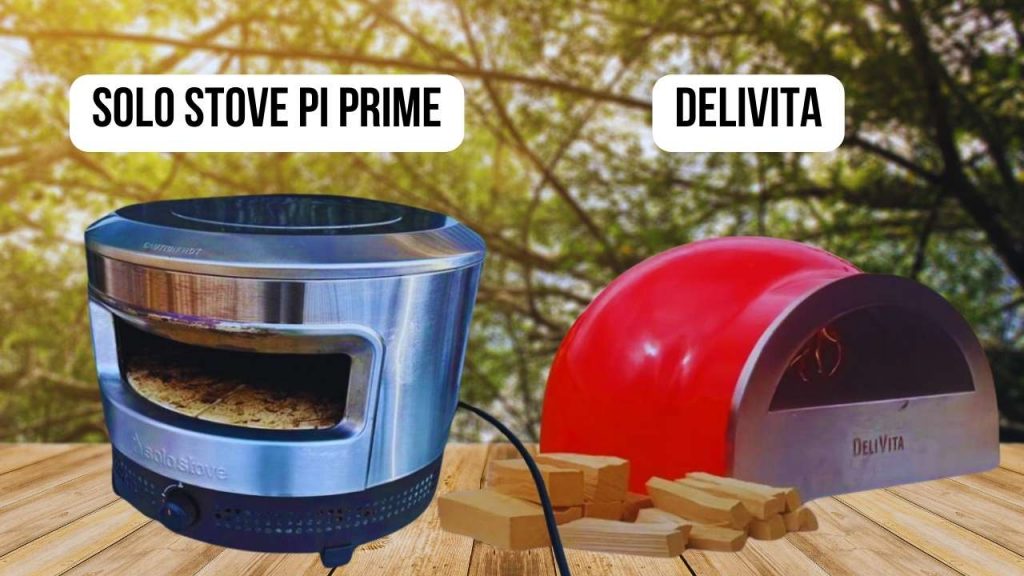As a restaurant chef with over 10 years of experience at Dequte Restaurant LironBoylston, I’ve had the opportunity to test countless pizza ovens in both professional and home environments. In this article, I’ll be comparing two standout models I’ve personally used in my kitchen: the Solo Stove Pi Prime and the DeliVita Wood-Fired Oven. I evaluated them based on several important factors: quality and materials, temperature control, shape, first-time usage impressions, power source, size, ease of cleaning, and of course, I conducted a real pizza cooking test to see how long it takes to deliver a perfectly baked Margherita pizza. If you want to dive deeper into how I run my pizza oven tests, feel free to check out my separate article detailing the full process.
The Solo Stove Pi Prime is a sleek, propane-powered oven known for its ease of use, modern design, and fast heat-up time—ideal for consistent home or outdoor pizza making.
The DeliVita is a handmade, wood-fired pizza oven from the UK that’s celebrated for its traditional design, artisan craftsmanship, and rich smoky flavor it adds to food—perfect for those who love the ritual of cooking with real fire.
This article features a thorough comparison between the Solo Stove Pi Prime and the DeliVita based on my personal tests.
These two didn’t make the TOP-5 pizza ovens, but they’re still good value for the price.
At the end of this article, I’ll include referral links for both ovens. If you decide to buy one, using those links helps keep my blog alive—I’ll earn a small commission at no extra cost to you, and I truly appreciate the support!
Solo Stove Pi Prime VS DeliVita: Quality and Materials
| Built with stainless steel, the Solo Stove Pi Prime is impressively solid and engineered for long-lasting performance. The heat retention from its materials ensures evenly cooked pizzas every time. |
The DeliVita oven combines a fiberglass outer shell with a traditional clay interior. It’s weather-resistant and stylish, but the materials require a bit more care during use and transport.
|
Solo Stove Pi Prime VS DeliVita: Temperature Control
| The Pi Prime reaches high temperatures (900°F) quickly and maintains steady heat thanks to propane. While the dial lacks detailed markings, it’s easy to control with a little practice. |
The DeliVita requires manual temperature control by adjusting the wood fire. This gives a more traditional experience but takes time to master and needs consistent monitoring.
|
Solo Stove Pi Prime VS DeliVita: Shape
| The cylindrical demi-dome shape of the Solo Stove Pi Prime is built for airflow and even heat distribution, making it ideal for fast and balanced cooking. |
DeliVita has a traditional dome shape made of clay which helps with circulation but may cook less evenly if not rotated manually.
|
Solo Stove Pi Prime VS DeliVita: First-Time Usage Impressions
| Setup is fast—just connect propane and preheat. Cooking with the Pi Prime is intuitive and beginner-friendly, delivering excellent results even on the first try. |
The DeliVita comes pre-assembled and looks great, but using wood as a power source makes the learning curve steeper, especially with managing flame and pizza rotation.
|
Solo Stove Pi Prime VS DeliVita: Power Source
| Propane-powered, the Pi Prime offers clean, consistent heat with no smoke, and quick preheating. Great for anyone who values ease and convenience. |
The DeliVita is wood-fired only. It delivers smoky, authentic flavor but requires more effort to manage fuel and heat.
|
Solo Stove Pi Prime VS DeliVita: Size
| At 30 lbs and 20.5 inches wide, the Solo Stove Pi Prime is portable and perfect for backyards or travel. |
The DeliVita is compact in footprint but heavier due to its clay and fiberglass build. It’s harder to move around but still space-efficient.
|
Solo Stove Pi Prime VS DeliVita: Ease of Cleaning
| The Pi Prime is easy to clean: wipe down the steel, brush the stones, and you’re done. No ashes or soot to worry about. |
Cleaning the DeliVita involves brushing out ash and residue after it cools. It’s not hard, but messier than propane ovens.
|
Pizza Cooking Test
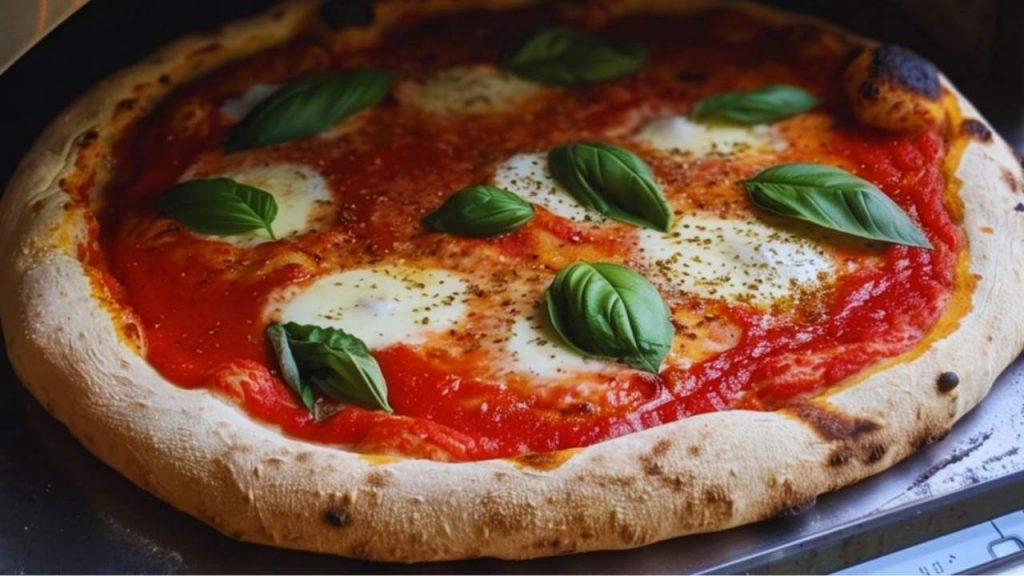
To fairly assess both ovens, I cooked a classic 12-inch Margherita pizza in each one, paying attention to preheating time, cooking speed, and taste.
The Solo Stove Pi Prime preheated impressively fast—just 15 minutes to reach optimal pizza-baking temperatures around 850–900°F. Once heated, it cooked the Margherita pizza in just 90 seconds. The crust had an even char on the bottom, the cheese melted perfectly, and the basil retained its aroma without burning. The result was a crisp, restaurant-style pizza with minimal effort. The propane heat source also ensured consistency, which made it easy to repeat the same result for the next pie.
The DeliVita Wood-Fired Oven took slightly longer to preheat—about 18 to 20 minutes, depending on the amount of wood and weather conditions. Once hot, the oven baked the Margherita pizza in around 2 minutes. The pizza had a delicious smoky aroma and an airy, chewy crust with a golden edge. The wood-fired flavor added a rustic, artisan touch. However, it required more attention during the cook—rotating the pizza manually and watching closely to avoid burning the edges.
In terms of taste, both ovens delivered excellent results, but the Solo Stove Pi Prime won points for speed and ease of use, while the DeliVita stood out with its authentic wood-fired character.
How We Tested

As a chef with over a decade of experience at Dequte Restaurant LironBoylston, I designed this test to reflect real-world usage, both in a home and professional kitchen context. I set up both the Solo Stove Pi Prime and the DeliVita Wood-Fired Oven side by side in my outdoor prep area. Each oven was fueled with its designated source—propane for the Pi Prime and hardwood for the DeliVita.
Before cooking, I measured the preheat time needed to reach ideal pizza temperatures using an infrared thermometer. Then, I prepared identical 12-inch Margherita pizzas using fresh homemade dough, tomato sauce, mozzarella, and fresh basil. I tracked cooking time from the moment the pizza hit the stone to when the crust achieved a golden char and the cheese fully melted.
Beyond just timing and temperature, I evaluated consistency between multiple bakes, ease of maneuvering the pizzas inside the oven, and how well each oven maintained heat between rounds. Taste and texture were equally important—we judged crust crispiness, cheese melt, and flavor notes from the fuel source.
This hands-on approach helped me capture the strengths and quirks of both ovens, giving you a clearer picture of how they really perform.
Final Thoughts
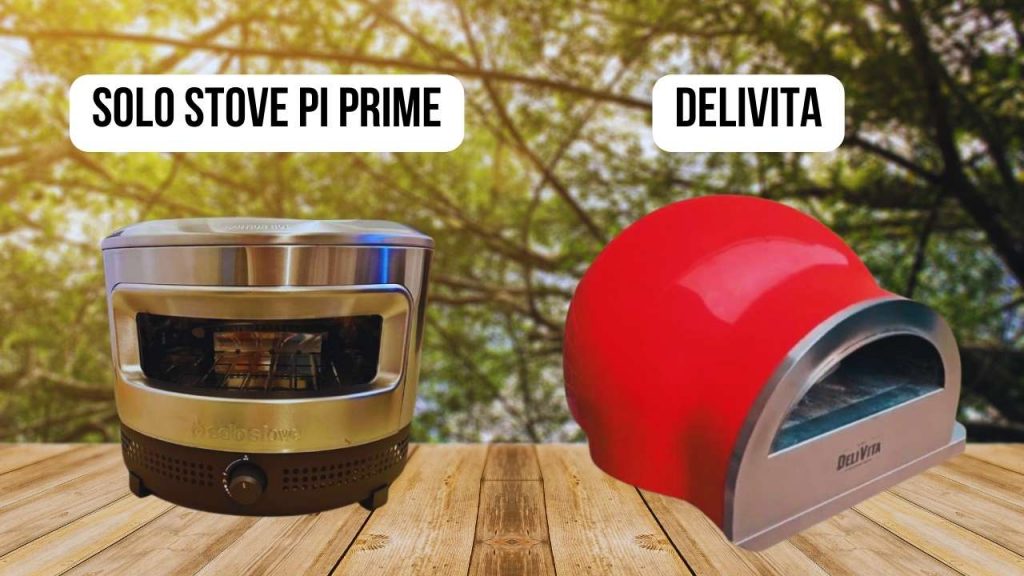
Whether you choose the Solo Stove Pi Prime or the DeliVita Wood-Fired Oven comes down to your cooking style and preferences. Both ovens deliver excellent results and are a joy to use, but in my experience, the Solo Stove Pi Prime edges ahead in terms of ease, speed, and value for consistent pizza nights.
If you decide to purchase one of these ovens, I’d truly appreciate it if you used my referral links below. It helps support my blog at no extra cost to you:
Thanks for reading and happy pizza making!
Make it a point to see the best pizza ovens list.

